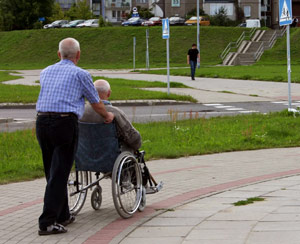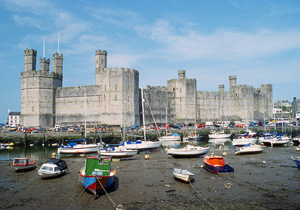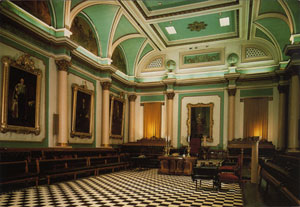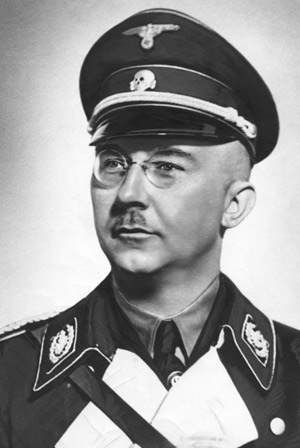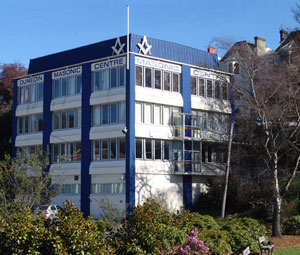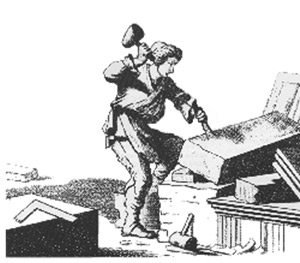| What is Freemasonry? |
|||
| Frequently Asked Questions |
|||
| How to join | |||
| Contact Information |
What is Freemasonry?
INTRODUCTION
Freemasonry is the world’s oldest fraternal, non-political, non-sectarian society. It is concerned with high moral and spiritual values and is open to men of integrity, of any religion, who believe in a Supreme Being.
Freemasons are expected to adhere to three principles:
-
Brotherly Love - Every true Freemason will show tolerance and respect for the opinions of others and behave with kindness and understanding towards his fellow human beings.
-
Relief - Freemasons are taught to practice charity and to care, not only for their own members, but for the community as a whole, by both charitable giving and by voluntary effort.
-
Truth - Freemasonry strives for truth and requires high moral standards of its members.
How and when did Freemasonry begin?
According to the legends which form part of the tradition of Freemasonry, the fraternity dates back to the time of the construction of King Solomon’s Temple. This enormous structure required a highly organised work force and led to architects, stonemasons, carpenters and others being organised into various trades or ‘guilds’, each with its own responsibilities.
Towards the end of the 19th Century, while excavating in the Libyan Desert, archaeologists’ discovered papyrus records describing meetings around 2,000 BC of a type of guild. These records include not only matters such as working hours, wages and rules for their labour, but also the relief and assistance for workers in distress and provision for widows and orphans. Even so the origins and early development of Freemasonry are a matter of debate and conjecture. A poem known as the ‘Regius Manuscript’ has been dated to approximately 1390 and is the oldest known Masonic text in English.
Certainly the general consensus of opinion, regarding the origins of Freemasonry, focuses on the magnificent structures erected by masons in the Middle Ages, being concentrated on the great castles, and especially the Gothic Cathedrals, of Europe and England.
And astonishing they were: it was 1960 before any building in London rose as high as the medieval cathedral at Strasbourg. The Strasbourg spire rose forty storeys (466 feet / 142 metres) above the town! Only by adding iron and steel could we lift buildings any higher than the Gothic cathedrals.
Medieval cathedral builders learned their empirical art through apprenticeship. Master masons held all kinds of jealously guarded tricks-of-the-trade; a vast inventory of knowledge about material selection, personnel management, geometrical proportioning, load distribution, design, liturgy, and Christian tradition. The masons of the Middle Ages saw no clear boundary between things material and things spiritual. They raised tons of stone into the air to communicate their praise of God, and when they were finished, they embellished the nooks and crannies and high aeries of their buildings with the phantoms of their minds - with cherubs and gargoyles and wild caricatures of each other.

 A mason carves a gargoyle out of stone... using the face of a colleague for reference! |

 Even in medieval times stonemasons had a sense of humour! COPYRIGHT © TO BE CONFIRMED |
But in order to complete the construction of these vast structures, it was necessary for masons to gather in fairly large groups and these moved from one finished building to the next under construction. Considerable knowledge of arithmetic, geometry and engineering was necessary and eventually these craftsmen formed themselves into guilds to maintain a high level of skill and qualification for their membership and to help protect the secrets of their trade.
So that they might have a handy place to discuss labour matters, any problems on the project in hand, and simply for protection against inclement weather, large temporary lean-to huts were built on the construction site, usually alongside the buildings’ walls, and these have been termed ‘Lodges’.
It should also be noted that these Master Masons were not ‘bondsmen’ but were free to ply their trade wherever they chose; this is the likely derivative of Free- mason.
The importance of protecting the masons craft eventually resulted in the creation of the Guild of Stonemasons, and this became a significant centre of learning, serving not only to protect its members’ jobs but to educate worthy apprentices and to increase the reputation of the craft. In those days, it was not possible to verify a craftsman’s credentials and skill levels with a union card or by e-mail, so appropriate signs, words and marks were selected for the purpose.
To this day, much of the work of those marvellous craftsmen survives, and from it we derive a living inspiration to bring similar qualities to the creation, not of a material building, but of a brotherhood of men of good will.
From the mid-1300s onwards the introduction of gunpowder to warfare began to erode the usefulness of castles but the construction of cathedrals continued unabated. Eventually, however, the number of cathedrals under construction declined; nevertheless the status and reputation of the Craft Guilds had risen to such an apogee that it became common for non-masons, who were leading citizens, to become honourary members. They were known as ‘speculative’ or ‘accepted’ Masons, while the qualified craft masons continued to be known as ‘operative’ Masons. As the number of these ‘speculative’ Masons grew and as matters concerned with education and qualifications of craftsmen were formalised and controlled at national level, and by other means, so the structure of the guilds changed over the decades and Lodges came to be formed exclusively of such members. They retained the symbolism of operative masons’ tools; for example the square, compasses, level, plumb rule and rule, for use as symbols in their teaching both verbal and written and, even in the 21st century, we find Masonic terminology used in general every day language with such phrases as “on the level”, “a square deal” and “upright character” being commonplace.
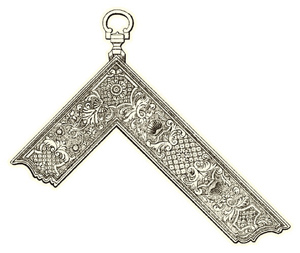

|


|


|
Evidence exists suggesting that there were Masonic lodges in existence in Scotland in the late 16th century: the Lodge at Kilwinning, for example, has records that date to the late 1500’s, and it is mentioned in the Second Schaw Statutes (1599) which specified that “ye warden of ye lug of Kilwynning [...] tak tryall of ye airt of memorie and science yrof, of everie fellowe of craft and everie prenteiss according to ayr of yr vocations.” (Sic)
So, although they had existed in some cases for centuries, the individual Lodges were scattered piece-meal throughout the UK and across Europe, thus the logical next step therefore was to somehow unite and strengthen their influence. This development led to the formation of ‘Grand Lodges’. The first, the Grand Lodge of England (GLE), was founded on 24 June 1717, when four existing London Lodges met for a joint dinner at the Goose and Gridiron Tavern.
This group rapidly expanded into a regulatory body that most English Lodges joined. A few Lodges, however, resented some of the modernisations that the GLE endorsed, such as the creation of the Third Degree, and formed a rival Grand Lodge on 17 July 1751, which they called the “Antient Grand Lodge of England.” For years the two competing Grand Lodges vied for supremacy – the ‘Moderns’ (GLE) and the ‘Antients’ (or Ancients) – until finally they united on 25 November 1813, creating the ‘United Grand Lodge of England’ (UGLE). The Grand Lodge of Ireland and the Grand Lodge of Scotland were formed in 1725 and 1736 respectively. The craft of Freemasonry was rapidly exported to the British Colonies in North America, with both the ‘Antients’ and the ‘Moderns’ (as well as the Grand Lodges of Ireland and Scotland) chartering offspring, or ‘daughter’ Lodges, and organising various Provincial Grand Lodges. Following the American Revolution, independent U.S. Grand Lodges formed themselves within each state. Some thought was given to organising an over-arching ‘Grand Lodge of the United States,’ with George Washington (a member of a Virginian lodge) as the first Grand Master. The idea was short-lived; the various state Grand Lodges not wishing to diminish their own authority by agreeing to such a powerful body. (See Famous Freemasons on this site.)
Now, in the 21st century, one can find Freemasons’ Lodges in virtually every city, town and village in the free-World. Freemasons’ work to help those less fortunate, their charitable assistance, and their obligation to right wrong within their surrounding communities, is virtually undiminished. It would seem that the philosophy of Freemasonry “to make good men better” is an ethos impossible to subdue.
Who can join?
Men from all walks of life who are law-abiding and of good character may join. There is no social or financial distinction; neither would an applicant be rejected for his religious beliefs; the ranks of Freemasons’ Lodges around the planet are filled with Roman Catholics, Jews, Hindus, Muslims, the list goes on. The essential qualification for admission is belief in a Supreme Being.
Each member is encouraged to do his duty to his God (by his own tradition) and he is required to conform to the law of the land in which he resides and by which he is protected. Freemasons are ordinary men who try to live as good citizens with high moral principles.They do not claim a monopoly on these standards but, by joining together in Lodges, they practice and teach ideals of kindness, honesty, decency, fairness, courtesy, understanding and concern for others, and thus hope to become better members of society.


|


|


|
Of any creed and colour, ordinary men from all walks of life can, and do, become Freemasons. |
What is a Masonic Lodge?
A Masonic Lodge is a group of Freemasons usually, but not exclusively, established on a local basis, enabling the members of the group to meet regularly in a well-known venue, possibly a Masonic Hall or a Masonic Centre. Lodges general meet on 10 months of the year. Lodges within the Irish Constitution are brought together in the first instance in districts known as Provincial Grand Lodges and, in New Zealand; the Irish Lodges come under the jurisdiction of the Provincial Grand Lodge in Auckland. In turn, Provincial Grand Lodges around the world are brought together under the jurisdiction of the Grand Lodge of Ireland with its headquarters in Molesworth Street, Dublin.
What happens at Lodge meetings?
As in any organisation, the meeting is first called to order. The ceremony of ‘Opening the Lodge’ then takes place; this is quite a formal operation and draws on elements of the very foundation of early Masonic ritual. It serves to remind members of the virtues by which they seek to live.
Once the Lodge is opened, the minutes and correspondence are read, projects are planned, and other business is conducted; very much like any other organisation. When new members are being received or when existing members are being advanced through the ‘degrees’ of ‘Craft’ Masonry, formal ceremonies are again used to teach and remind those present about important moral lessons. Degrees are conferred during the business section of the meeting.
The formal ceremony of ‘Closing the Lodge’ then ends the meeting which is usually followed by supper where the members meet socially, talk informally and greet their friends and visitors from other Lodges.
How many ‘degrees’ are there in Freemasonry?
Known, in the beginning, as ‘Craft’ Masonry, Freemasonry has three degrees; the first being the degree of ‘Entered Apprentice’ representing the apprentice of the working stonemason who learned how to use the tools of his trade. After a period the ‘apprentice’ progresses to the second degree of ‘Fellow Craft’, or ‘Fellow of the Craft’ and, on completion of another period, to the third degree, that of ‘Master Mason’. The average gap in between the taking of each of these three degrees would usually be a minimum of three months.
Other degrees - A Master Mason may choose to stay in Craft Freemasonry or, he might decide to gain additional experience and wisdom by progressing further with the higher degrees. The higher degrees of learning culminate in the 33rd Degree, whether a man progresses that far is a matter of individual choice. No pressure will be put on man to progress to any level of Freemasonry with which he does not feel comfortable or with which he cannot cope.
 |
|
Why do Freemasons wear regalia?
In a word, “tradition”. The wearing of regalia is historic and symbolic. It serves to indicate where members rank in the organisation. Aprons, collars and gauntlets derive from, and reflect the usage of, the various protective garments worn by the original stonemasons. In Medieval times (and mostly today), the apron worn by operative stonemasons was of leather (or tough cloth) tied around the waist, to protect the mason as he handled, cut and worked stone. In the here-and-now, the traditional ceremonial aprons worn at Lodge meetings become more ornate as the member advances through the various degrees of Freemasonry; it shows the progress he has made.
Is Freemasonry a ‘Secret Society’?
No. Freemasonry is not a secret society, but it might be said that “it is a society with secrets”. But these ‘secrets’ are solely concerned with traditional methods of recognition among members. This though is a complex question to answer as it involves a great entanglement of historical events. Freemasonry stands for truth and is, therefore, the antipathy of any dictatorship. Freemasonry is on the side of ‘light’, of ‘good’ and totally opposed to the doing of evil deeds. From such strong moral foundations, it must come as no surprise that the world’s bad men, the world’s weak and corrupt governments, or those that use terror as a weapon, find no support from Freemasons, and therefore usually consider Freemasons to be a threat.
Freemasonry under the Nazis - Persecution by brutal regimes is nothing new to Freemasonry and it does help to explain why, until fairly recent times; Masons have preferred to keep their membership of the Order, a secret.
The preserved records of the Reichssicherheitshauptamt (RSHA = the ‘Reich Security Main Office’) show the arrest and detention of German Freemasons. At the head of the RSHA loomed the infamous Heinrich Himmler and the Amt VII (Written Records) department was overseen by SS Officer, Doctor Franz Six and was responsible for “ideological” tasks, by which was meant the creation of anti-Semitic and anti-Masonic propaganda.
While the number is not accurately known, it is estimated that at least 80,000 Freemasons were killed under the Nazi regime. Masonic concentration camp inmates were graded as political prisoners and wore an inverted red triangle.
The forget-me-not symbol - The small blue ‘forget-me-not’ flower was first used by the Grand Lodge Zur Sonne, in 1926, as a Masonic emblem at the annual convention in Bremen, Germany. In 1938 the forget-me-not badge – made by the same factory as the Masonic badge – was chosen for the annual Nazi Party Winterhilfswerk, a Nazi charitable organisation which collected money so that other state funds could be freed up and used for rearmament. This coincidence enabled Freemasons to wear the forget-me-not badge as a secret sign of membership.
After World War II, the forget-me-not flower was again used as a Masonic emblem at the first Annual Convention of the United Grand Lodges of Germany in 1948. The badge is now commonly worn in the coat lapel by Freemasons around the world to remember all those that have suffered in the name of Freemasonry, especially those during the reign of Adolf Hitler’s Nazis.
Masonic Laws and Constitutions are available to the public, and many books on Freemasonry exist in any good public library while, of course, the Internet is equally an abundant source of information.
Freemasons are intelligent and skilled men who know the basic difference between right and wrong. Thus Freemasons, simply by their nature, will always be an anathema to evil regimes and corrupted souls.
Freemasonry Today - Now, in the 21st century, Freemasons are free to acknowledge their membership of the Order and will do so in response to reasonable enquiries. These days Brethren are encouraged to speak freely about Freemasonry. There is no secret about any of its aims and principles. The Masonic Laws and Constitutions are available to the public, and many books on Freemasonry exist in any good public library while, of course, the Internet is equally an abundant source of information.
Masonic meeting places are well known and, in most areas, Masonic buildings are used by local bodies for activities other than Freemasonry
Why do Freemasons take oaths, some of which contain hideous penalties?
In each ‘degree ceremony’ the candidate or member is required to make a solemn promise, or obligation, never to reveal certain matters that are about to be revealed to him. Again, these largely relate to the methods of mutual recognition that have been retained for reasons of tradition.
When Masonic ritual was developing in the sixteen- and seventeen-hundreds it was quite common for legal and civil oaths to contain physical penalties for breach of promises, and Freemasonry simply followed the practice. The so called ‘hideous penalties’ contained in the obligations, however, were symbolic and were not carried out. Although they were kept in the ritual for traditional reasons, by the late eighteen-hundreds they had been relegated to mere historical mention.
Why, in this ultra-modern world, is ancient ritual still in use by Freemasons?
The language, narrative and symbolism of ritual that has been passed down through the centuries within Masonic Lodges, impresses the principles and teachings of Freemasonry more firmly in the mind of candidates, and members, than if they were passed on in matter-of-fact modern verbiage. Ritual is one of the great aspects of the Order that members enjoy: the shared experience of using and learning ancient ritual helps to bind them together.
Is Freemasonry a political or politically driven organisation?
No. Freemasonry is non-political. It has no political attitudes, except to require its members to be peaceable and law-abiding, regardless of the individual political opinions they hold outside the Order. Political discussions at Masonic meetings are strictly forbidden. (See ‘Freemasonry under the Nazis’ above and the article on ‘The Royal Society’ elsewhere on this website.
There are some self-styled ‘Masonic Bodies’ in certain parts of the world that encourage their members to participate in political matters. These Bodies re not recognised by the Grand Lodge of Ireland and the other regular Grand Lodges, and contact with them is prohibited.
Is Freemasonry a religion or rival to religion?
No. Freemasonry is not a religion or a combination of religions. It is not a rival to, or a substitute for, religion - nor is it ‘anti-religious’, as Freemasonry expects each member to practice his own individual religion. It regards a man’s relationship with his God as a purely private matter and never enquires nto it, or lays down any rules about a man’s beliefs. As with politics, no discussion on religious matters is permitted at Masonic meetings.
Why do Freemasons use such strange terms such as “the Volume of the Sacred Law” and “the Great Architect of the Universe”?
“The volume of the Sacred Law” is a general term used to describe the sacred books of all religions. For Muslims it means the Koran, for Christians the Holy Bible, for Jews the Torah, and so on. Similarly, the phrase, “The Great Architect of the Universe” is an easy to understand, general term used when referring to God in the various religions.
The members of each religion know what the terms mean to them. Non-denominational terminology discourages disharmony, but such phrases are not used in an attempt to roll all religions into one or to create a specific Masonic Sacred Book or God.
Are Roman Catholics accepted into Freemasonry?
In a word; yes. Members of the Roman Catholic faith are accepted into Freemasonry. Indeed, it might be said that they automatically have the essential qualification for membership, a belief in a Supreme Being.
In the past, a number of the Grand Masters have been Roman Catholics and, at present, there are many members of that faith in Freemasonry.
Why are there no women in Freemasonry?
The early stonemasons were male and, in the period when Freemasonry was developing, the position of women in society was much different from that of today, as a result, they were not part of the organisation. That situation continues today except that nowadays there are similar societies for women and they have their own lodges.
In the Americas and elsewhere there are Orders that accept women into their ranks or that are exclusively for women: such as the ‘Daughters of the Nile,’ he ‘Order of the Eastern Star’ and the ‘Order of Amaranth’, to name just three.
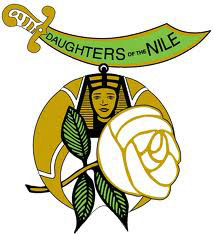
 Daughters of the Nile |
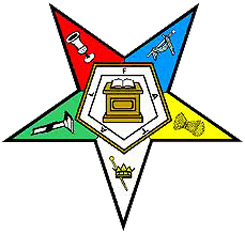
 Order of the Eastern Star |

 Order of Amaranth |
What is the relationship between Freemasonry and other organizations such as the Rotary Club, the Round Table, The Orange Order, Apprentice Boys, Hibernians and Buffaloes?
There is no connection between Freemasonry and any other Order. Individual Freemasons though may be members of other orders; this is simply a matter for that person. It might be noted however that, for charitable reasons, certain notable regular Freemasons originally founded, or assisted in the foundation of, some of these organisations. (See ‘Famous Freemasons’ elsewhere on this website.)
Are Freemasons expected to “look after their own”?
Only in as much as a Mason has a duty to assist another Brother in distress, or members of a Freemasons’ family who find themselves in difficulty, or Masonic widows and orphans. However, a Freemason’s duty as a citizen must always prevail over any obligation he has to other Freemasons. Any attempt to shield another member who has acted dishonourably or unlawfully is strictly forbidden. Similarly, the use by a Freemason of his membership to promote his own or another member’s business, professional or personal interests is not permitted.
What support does Freemasonry give to those in need?
In short, a great deal. Since its earliest times, Freemasonry has been involved in caring for the families of deceased Freemasons, and also members in distress. Widows, children, the aged, and members who are going through difficult times, may be supported by counselling, by practical help or financially. In recent times, substantial sums have been donated to non-Masonic organisations, especially in the field of medicine. In England the level of Masonic giving is second only to the National lottery. In the U.S.A., Masonic charities donate upwards of $2,000,000 US dollars per day to charitable causes. The trend of giving is firmly established within Freemasonry and will continue.
What part does Freemasonry play in today’s society?
Just like members of other organisations, Freemasons take part in, or actively organise, many activities in the community. They are encouraged to play their part in society, to be tolerant, benevolent and to serve others. Freemasonry therefore is ‘a part’ of society - not ‘apart’ from it.
Is Freemasonry an International Order?
It is in the sense that Freemasonry exists throughout the free world – but there is no all encompassing international governing body. The Grand Lodge of Ireland is the supreme authority for all Lodges within the Irish Constitution. It is an entirely independent and autonomous body, although it works in close co-operation with its sister Grand Lodges in England, Scotland, New Zealand and, indeed, more than one hundred other Regular Grand Lodges throughout the world.
How much does it cost to become a Mason and am I expected to donate a lot of money to charity?
Like most organisations, groups and clubs, the members of Masonic Lodges are expected to pay an initial one-off joining fee and yearly subscriptions thereafter, but these fees are always set at a sensible level. (Details can be obtained from the Secretary of Lodge St. Patrick (see Contact Us) or from any Lodge near to you.)
Donations to charity are a matter for the individual; certainly no pressure will be exerted on any member to give to charity. A Freemason may though occasionally be asked to give up a little of his spare time to assist with some aspect of a legitimate charitable organisation.
Do I have to come from an Irish background to join a Lodge within the Irish Constitution?
No. A man of any ethnic origin can join a Lodge that comes under the authority of the Irish Constitution. In recent times in New Zealand we have seen an Englishman be Master of an Irish Constitution Lodge, and an Irishman as District Grand Master presiding over many Scottish Constitution Lodges!
How do I join Freemasonry?
Most men have come into Freemasonry through contact and friendship with existing members. If, however, someone wishing to join does not know a Mason, information on how to join can be obtained from the Secretary of Lodge St. Patrick at the address below.
As is the case in most groups, clubs and fraternities, applications are considered in accordance with the by-laws of the organisation. Potential members are not pressurised into joining. If they join it will be because they want to, not because of undue pressure. One aspect that, it is fair to say, does make Masonry stand out from the membership of other organisations or groups, is that it is still considered quite an honour to be asked to become a member of a Lodge of Freemasons. It should be noted though that Masonic membership is a commitment to live with integrity and honour, to care for others, to trust each other, and to place one’s ultimate trust in one’s God.
The following downloadable and printable PDF booklets are available for you or your partner to read, and provide more in-depth information:
 |
 |
 |
For one-to-one information, please contact:
- M N Darling
- The Secretary
- Lodge St. Patrick No.468, I.C.
- Dunedin Masonic Centre
- 43 Manor Place
- Dunedin 9016
- South Island
- New Zealand
- E: lodgestpatrick@gmail.com
- T: +64 (0)3 473 0359
- F: +64 (0)3 454 5494
- W: www.lodgestpatrick.co.nz
- John M Davies,
- The Secretary
- Provincial Grand Lodge
- of New Zealand (Irish Constitution)
- 8/47 Edmonton Road,
- Auckland 0612,
- New Zealand
- c;
- T: +64 (0)9 625 7772
- E: cymro@clear.net.nz
- W: www.ara348ic.org.nz
- D B Lyons
- The Secretary
- Grand Lodge of Ireland
- Freemasons’ Hall
- 17 Molesworth Street
- Dublin 2
- Eire
- E: office@freemason.ie
- W: http://www.freemason.ie

